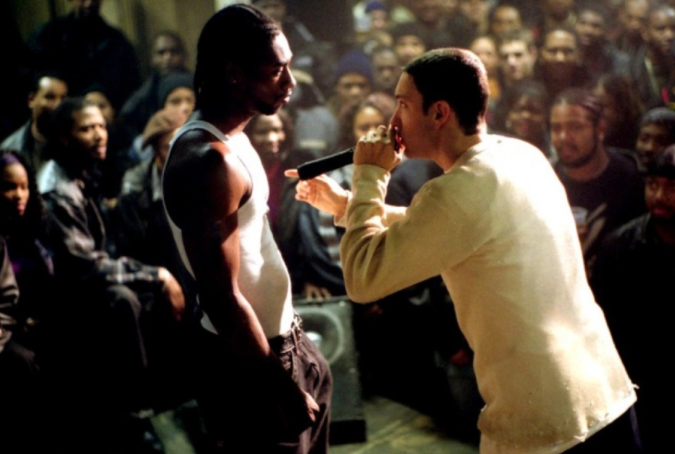 As a sports fan, walking into your favorite team’s stadium is an experience. A feeling of inspiration, excitement and awe as you’re surrounded by fans. The first time you hear the crowd roar after a good play. The first time you stand to cheer at a critical moment as the jumbotron lets out a rally cry. There’s really nothing like it.
As a sports fan, walking into your favorite team’s stadium is an experience. A feeling of inspiration, excitement and awe as you’re surrounded by fans. The first time you hear the crowd roar after a good play. The first time you stand to cheer at a critical moment as the jumbotron lets out a rally cry. There’s really nothing like it.
That’s how I see employer branding, too. While some might question the metrics that matter and the consequences of when it goes wrong, the bottom line is that when you get it right? It’s a powerful feeling and it translates both on the emotional side and in bottom line results. That’s of course why everyone is so hungry to create the next Zappos or some other employer brand driven by creative culture in their own company.
That uncertainty has driven a lot of curiosity so my team and I launched an inaugural State of Employer Branding survey in Q3 of this year. The survey tried to dig into recruiters’ and marketers’ thoughts on employer branding as a business function and its interconnectedness with candidate experience. We also dug into challenges today’s companies are facing, what they’re prioritizing, and the bottom line benefits of making an investment in employer branding.
After analyzing nearly 300 responses from a range of companies (20% of which had revenues of greater than $1 billion and a vast majority were from North America), we wanted to share the Cliff’s notes version. If you’re interested in the full report, you can get it here.
Wax Lyrical: Breaking Down Employer Branding Trends
- So Happy Together: Employee Happiness and Employer Branding Are Connected
Having a place people actually want to work is a prerequisite for a strong employer brand. So it probably makes sense that almost 9 in 10 professionals felt employee happiness and employer branding are connected. This is an important point. Before pouring budget into improving your outward facing image as an employer, start by fixing chronic issues in your organization. The factors that comprise employee happiness (culture, benefits, work/life balance, career opportunities, etc.) all contribute to employer brand.
- All The Way Up: Employer Branding Continues to Rise as a Business Function
While many companies have thrown together strategies for employer branding programs over the past few year, 41% of those surveyed said they currently have a formal employer branding program. Note that this number is considerably higher when we look at companies with more than 1,000 employees. 59% of companies think employer branding and corporate branding are different (it is). And 2 in 3 said their employer branding budget increased or stayed the same compared to last year (only 6% said it got smaller).
These indicators combined point to the rise of employer branding as an area of specialization. Yet, a lower number, 17%, reported having any employees at their company with “employer branding” in their job title. With more formalization and budget going into this area, though, we expect to see a sharp rise in employer branding-specific job titles and openings in 2017.
- Brain Freeze: Creating Employer Branding Content Is a Major Challenge
When asked about their top challenges, the most frequently marked option by recruiters and marketers – about 50% of our group – was “creating employer branding content.” This makes sense because creating compelling, engaging, shareable content is no easy feat. It’s a challenge not exclusive to recruiting — marketing teams struggle to consistently generate blog posts, infographics, videos, podcasts, and such that people want to read, too.

- Gimme Upgrade: Don’t Discount the Impact of Candidate Experience on Employer Branding
Throughout the entire candidate experience from sourcing to onboarding, there are plenty of aspects of candidate experience to control and optimize. But the one thing you can’t control? Candidate reviews. It’s the Achilles heel of employer branding.
That said, we found that 95% of professionals think the quality of their candidate experience impacts their employer brand. No other yes-or-no question we asked received such an overwhelming majority.
- Talk Dirty To Me: Social Media Is the Likely Entry Point Into Employer Branding
When asked which employer branding channels they are using, 88% of respondents listed social media. The next closest channel was employer review sites at 55%, followed by content marketing at 46%. This is perhaps a sign of the times, since social media is so deeply a part of our everyday lives. But it’s also worth noting that starting a social media account requires very little effort. Creating an engaging account, on the other hand, is far more challenging.
- Dolla Dolla Bills, Y’all: Analytics Are Vital to Proving an ROI On Employer Branding
Only 35% of companies were able to establish an ROI on their employer branding efforts in 2015. Among them, there was one thing in common—91% reported using some form of employer branding specifc analytics.
You’ve no doubt heard a variation of the saying “You can’t improve what you don’t measure.” And there’s a good reason for that. Data can guide decisions, and even accelerate performance when it’s effectively measured and analyzed. Without data, you’re playing a dangerous guessing game that can cost you budget and even your reputation in the workplace.
Whether you’ve been executing employer branding campaigns for years or you’re just starting out, analytics are crucial. At the very least, get a grip on your performance by using Google Analytics, Twitter Analytics, LinkedIn Analytics, and others that come at no cost.
Again, you can get the full eBook here.
About The Author
 Mike Roberts leads digital marketing and demand generation at Jibe, a SaaS startup focused on the recruiting space. He has helped many SaaS companies differentiate themselves in crowded markets. You can connect with him on LinkedIn or on Twitter @mp_roberts.
Mike Roberts leads digital marketing and demand generation at Jibe, a SaaS startup focused on the recruiting space. He has helped many SaaS companies differentiate themselves in crowded markets. You can connect with him on LinkedIn or on Twitter @mp_roberts.
By Mike Roberts
Recruit Smarter
Weekly news and industry insights delivered straight to your inbox.







